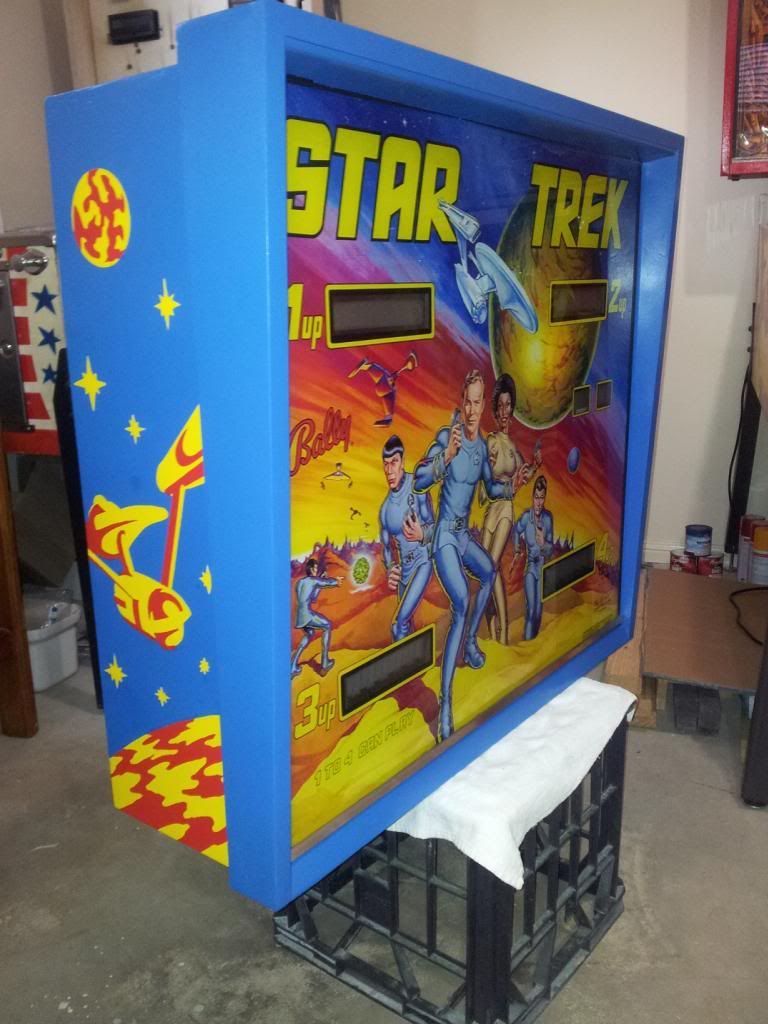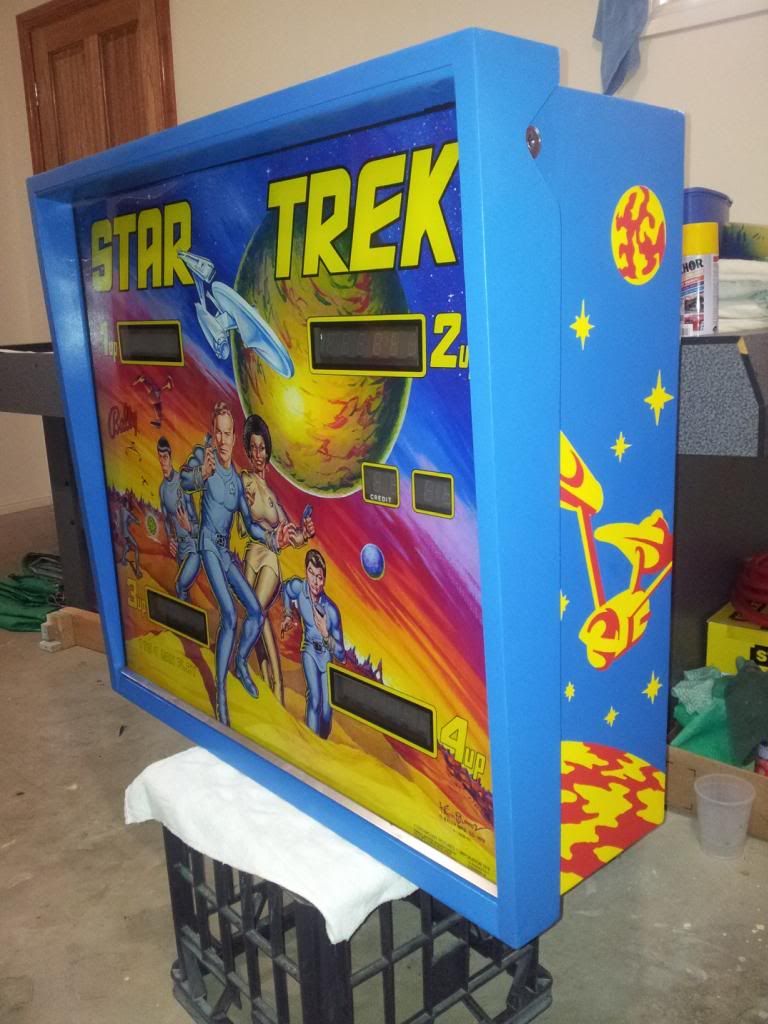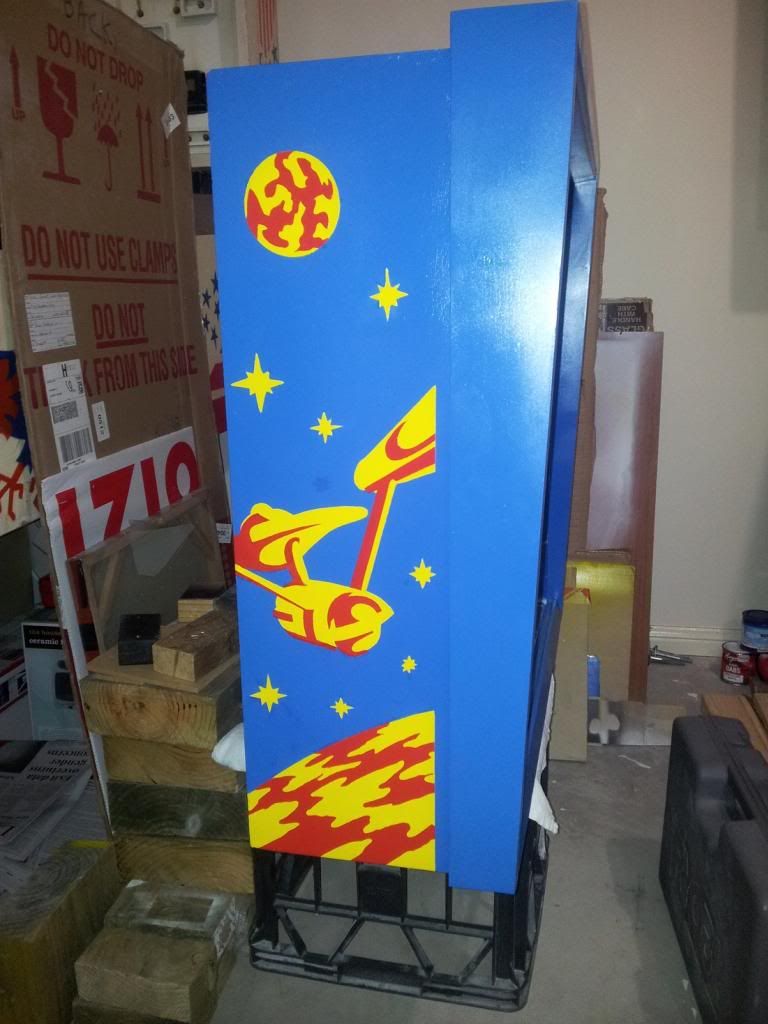Is that the original PF?? if so.. for a Bally Star Trek this has MINIMAL wear... should see mine it has a large part of the Enterprise worn away like so many others.
Yes, that is the original PF. But once you see the NOS one (which will appear in this thread), I guess I just wanted the PF to be the best along with the cabinet.
Now begins the fun of the cabinet restoration. On one hand I really enjoy this, because I know the end result will be really good. On the other hand, it is a long and very enduring time. If you want to restore cabs (as in sand back and respray), then be prepared for alot of work!
After creating the previous Delta Queen stencils myself, I really at first did not want to create any more stencils if I didn’t need to. So I began to look around on the net as to what was available. I ended up purchasing 3 sets of stencils from Classic Arcades in the US – for Six Million Dollar Man, this Star Trek, and an upcoming Power Play.
To make a long story short, the stencils in my opinion were a waste of time. Once they were delivered, I looked them over and found significant errors as compared to the original artwork. In some examples, shapes were completely and utterly wrong. I didn’t use them and I sent all of the stencils back to Jeff at Classic Arcades, but that took a few months to eventually get my refund. I would caution anyone first if you are planning on using these stencils, and Jeff is pretty much at the bottom for any communication whatsoever.
So ……. it was back to creating the stencil set myself. I do feel at the end of the day if you want it done right, then do it yourself if you are up to it. I believe stencils should attempt to reproduce the original artwork with 100% aim of recreating original. Creating stencils is a long, long process. As I covered in the Delta Queen restoration, I used Reynolds freezer paper. First is tracing all of the artwork on the paper. This was very challenging for the backbox, because the yellow and orange perimeters did not contrast well (with the blue background) as seen through the paper when tracing. It took more time than I had expected. Tracing the orange on the main cabinet was slot easier (as it showed a better contrast against the yellow), and the blue was very easy.
After completing the stencils, focus was then on the physical restoration of the cabinet. First the backbox.
I use Minwax wood filler, and then sand back. I have found in my experience that it is not really necessary to sand the paint back to bare timber. Yes, probably would maximize a better “grip” for the primer coat that will go down, but just saying through my experience that sanding it back to what you see in the images below has worked for me.
The images below show the backbox after applying the wood filler.
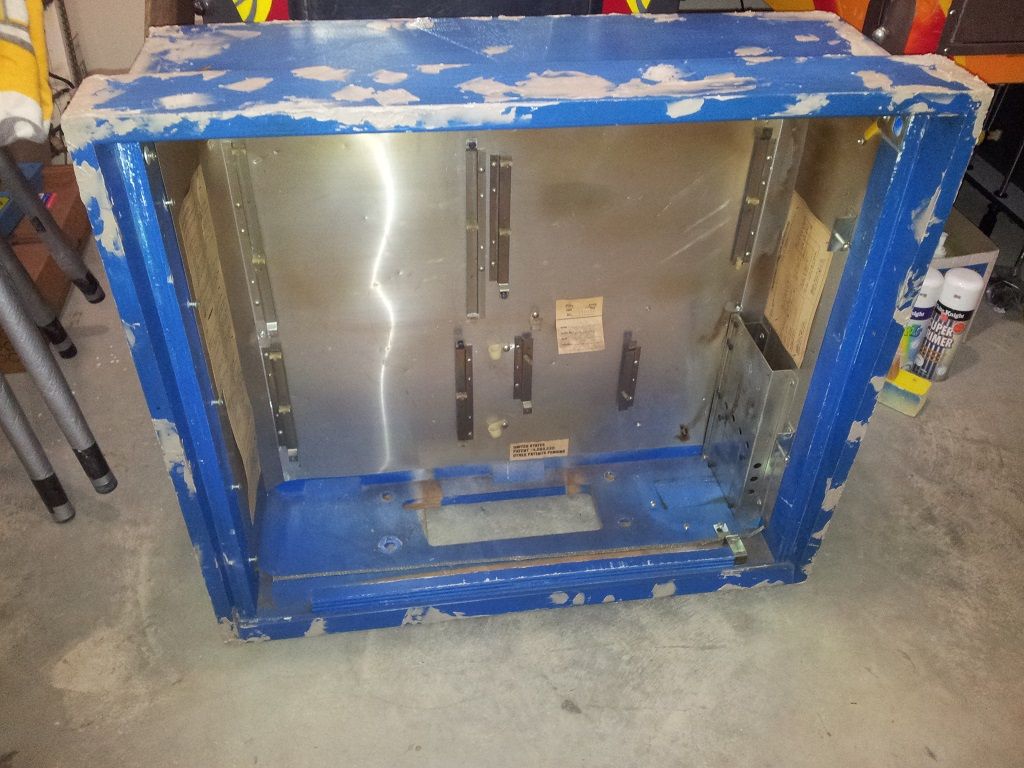
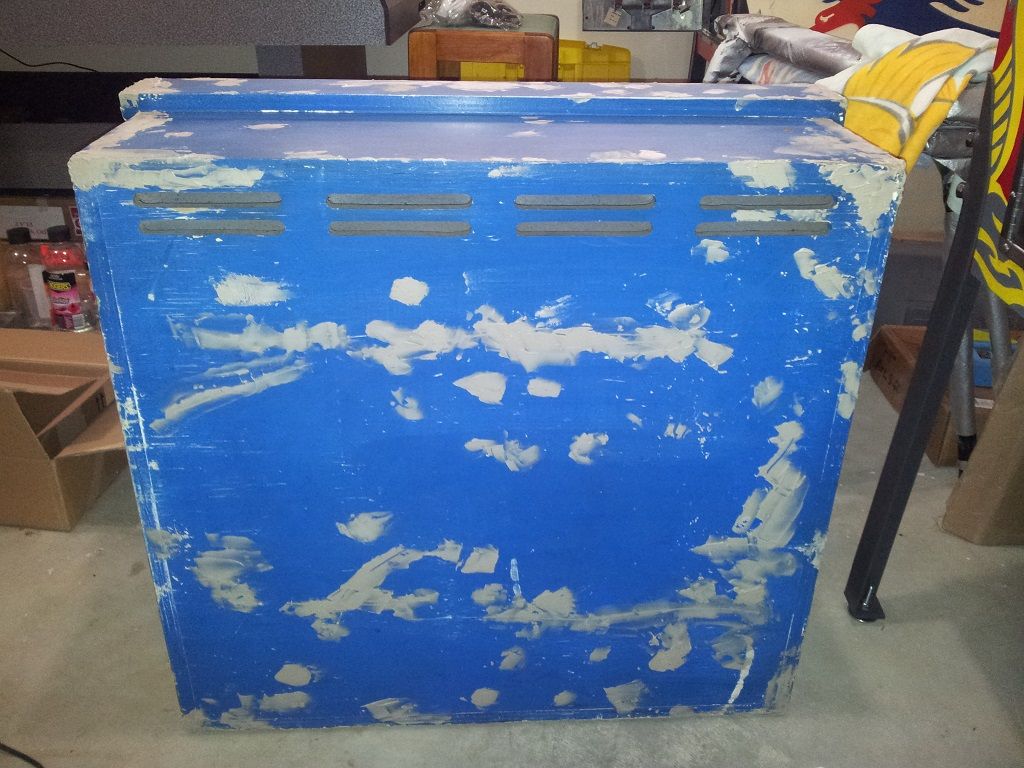
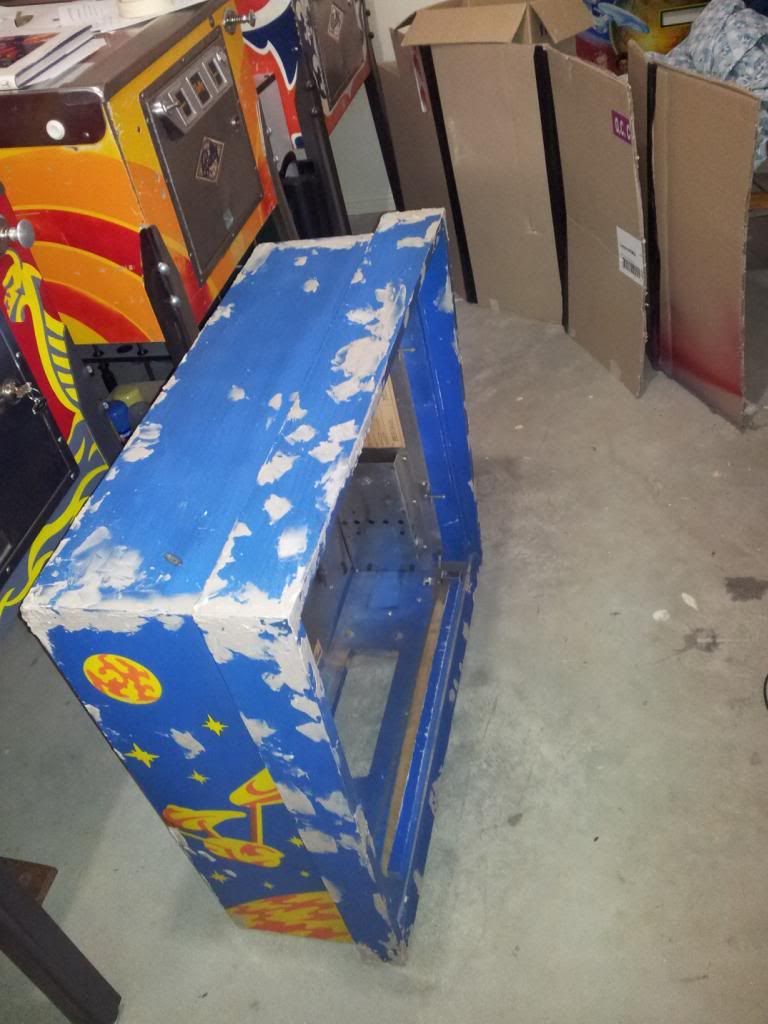
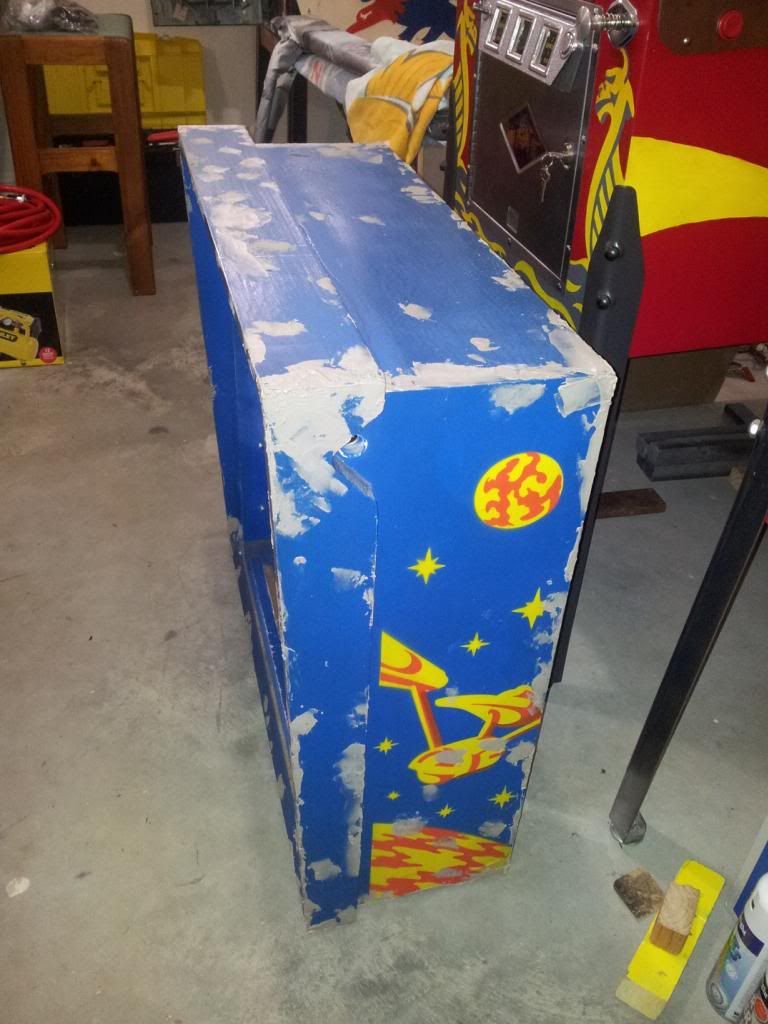
And these images show after sanding.
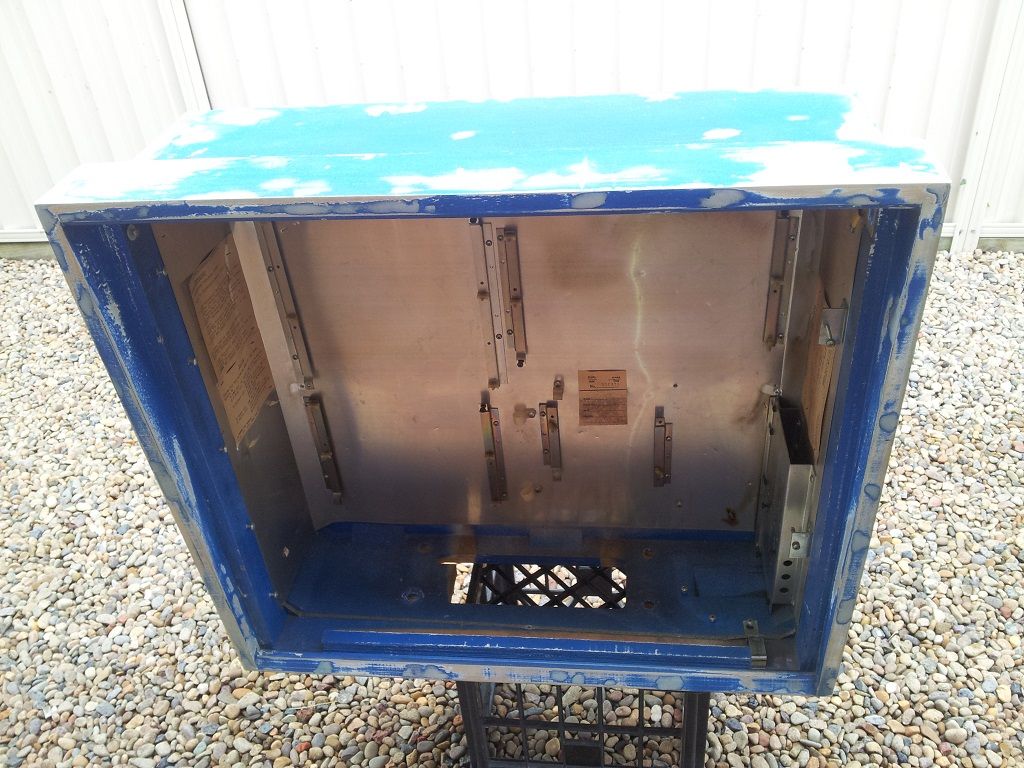
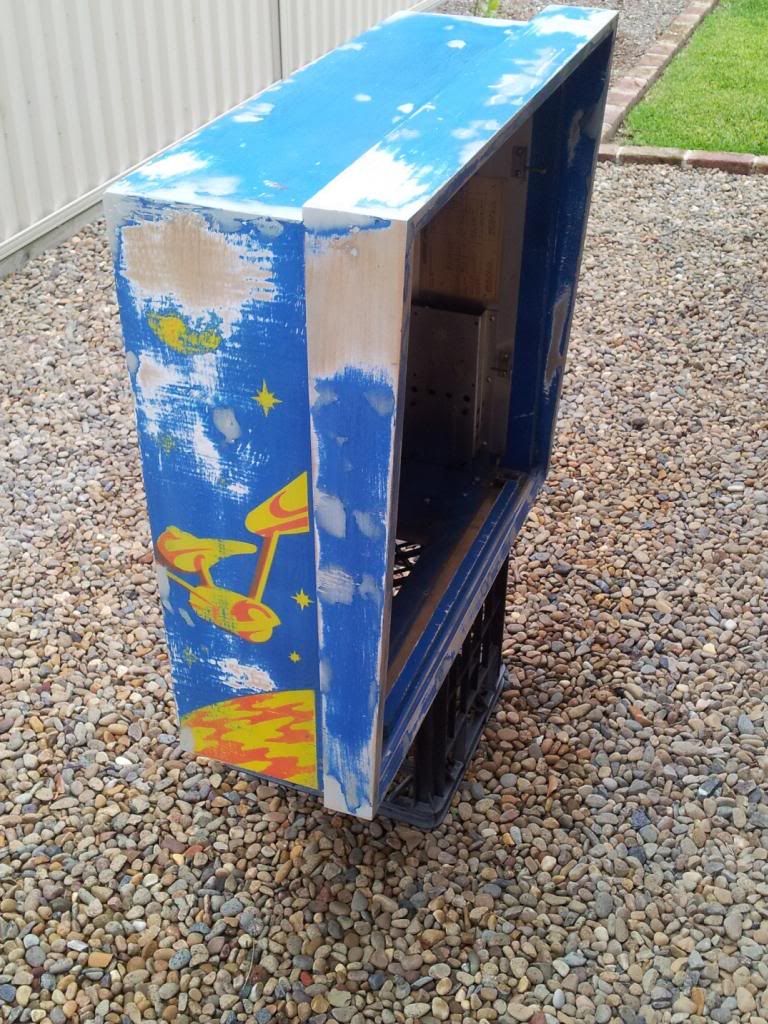
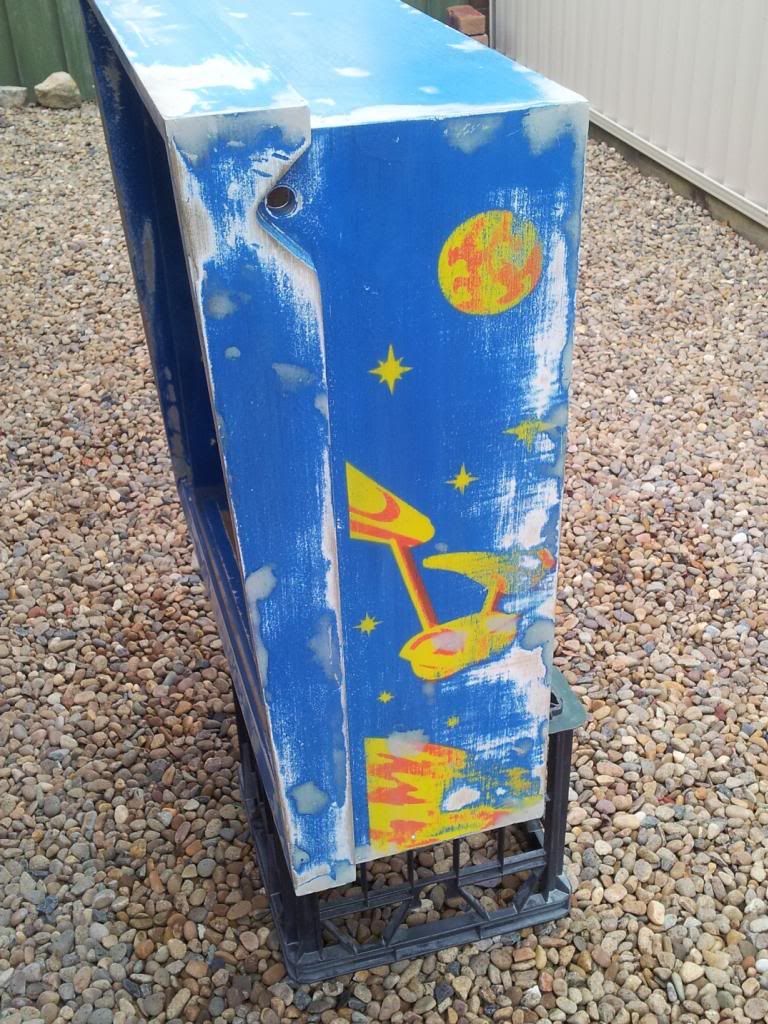
With the backbox now sanded smooth, I was ready to apply the primer followed by the base colour. I use acrylic lacquers for paints (spray cans), and it is great as it goes on smooth and is touch dry within 10 minutes.
Here’s after the base colour was applied. So nice and vibrant is the blue colour.
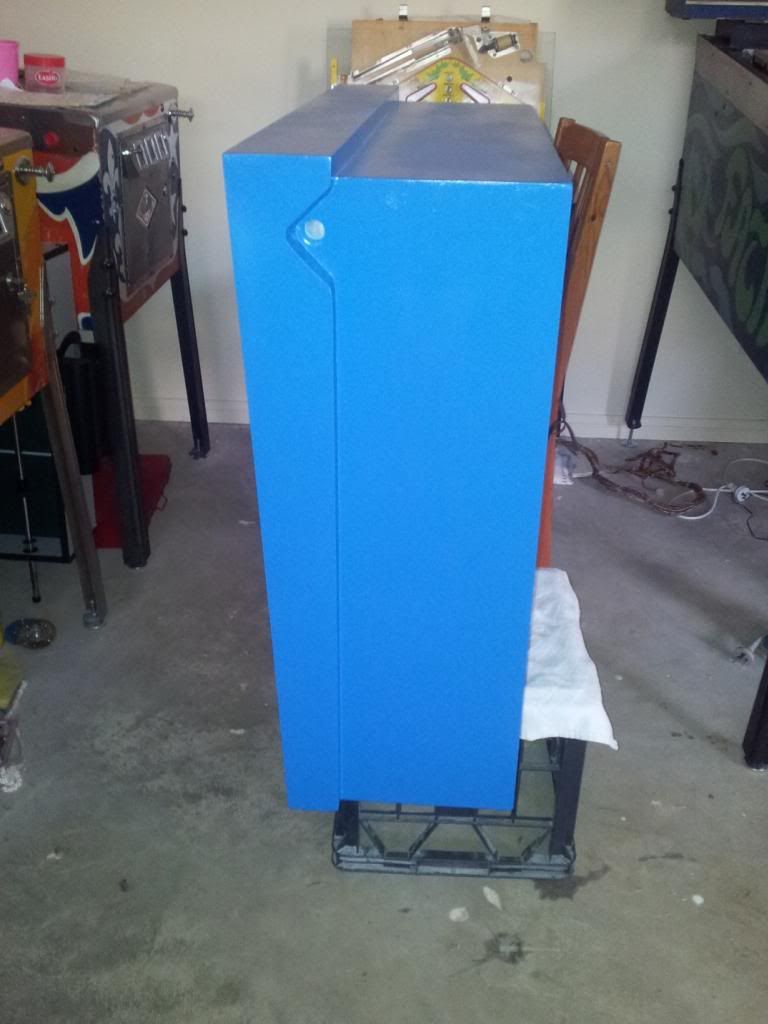
After applying paint (or primer), I usually leave it alone for at least 5-7 days to be on the safe side. OK, next was applying the stencils for the next colour (yellow). Here you see the stencil, which is adhered to the side with Krylon easy tack.
As I covered in the Delta Queen restoration, I found spraying the adhesive on the paper side of the freezer paper worked better (upon removal of the stencil) than spraying on the plastic side. Much cleaner in the removal process.
Also, before I spray the paper side of the freezer paper, I first create effectively what I would call a spray mask and place this on top of the stencil before spraying. I didn’t capture an image of this (which would have helped you to visualize what I mean), but it is many sheets of A4 paper taped together (side by side) big enough to cover the entire stencil. And this paper is cutout (following the artwork perimeters) so that I end up spraying only the perimeter (about a 1cm width) of what needs to stick down to the cabinet. Sorry if this doesn’t make sense, but in effect I am minimising of where the adhesive really needs to go, rather than blanketing the whole side of the stencil.
After spraying the stencil, I usually let it sit for about one hour before applying to the cabinet. It says that the spray will be touch dry after 3 hours.
In the case of the images below, I actually ran out of yellow paint (I thought I would have enough, damn!) during the spraying. I had to wait another 2 days until I got some more, and removing the stencil this time did take more effort.
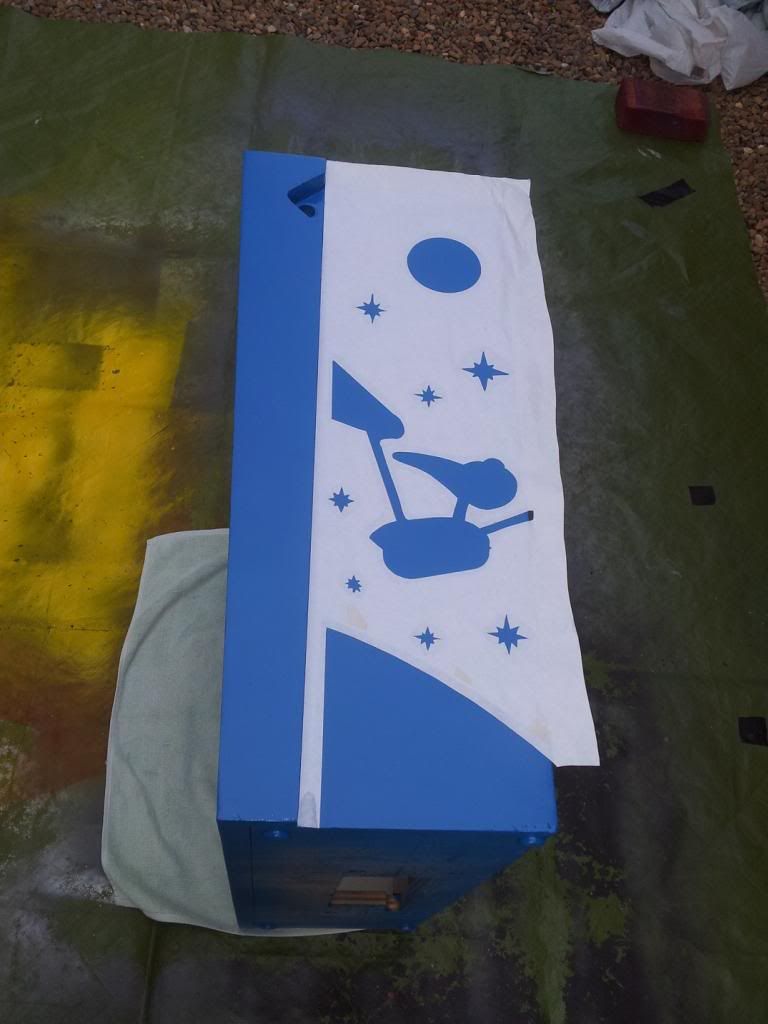

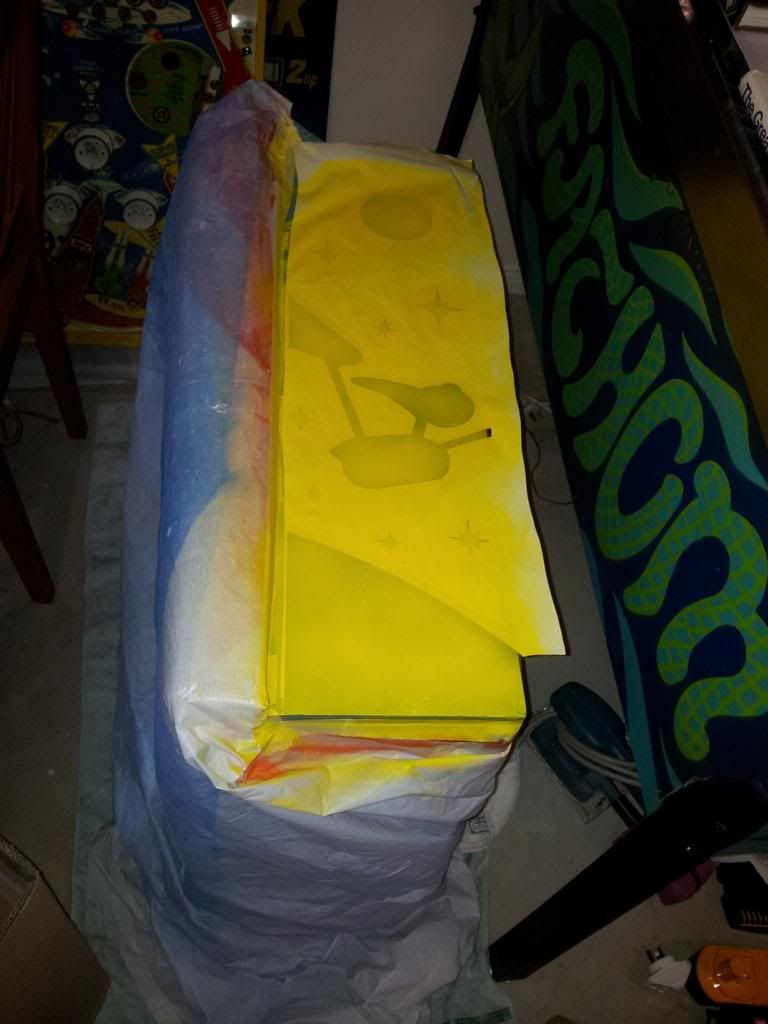
And here are the results. I was really, really happy with the outcome. And by the way, no, it does not come out this way after removing the stencils. There is usually always some degree of paint bleed along the perimeter, so touchups are usually required after. From a distance, you would not know they have been touched up. But up really close you would see some of the effects of touchup.
